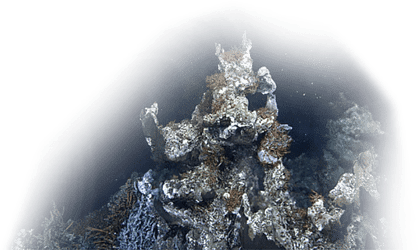The Canada Foundation for Innovation (CFI) has been supporting research in Canada for more than 20 years by providing scientists with state-of-the-art gear and facilities. The University of Victoria and Ocean Networks Canada (ONC) were recently involved in a new initiative that aims to get Canadian girls excited about science by introducing them to the amazing CFI-funded machines used to explore our world.
On 7 April, as part of the CFI’s Science Machines pilot initiative, ONC hosted a hands-on workshop with a local Girl Guide troupe to build their own miniature underwater robots, while learning how ONC uses remotely operated vehicles (ROVs) to install and maintain its ocean observatories (Figure 1).
Figure 1. The Girl Guides create their own underwater robots, which included learning how to solder and use a drill.
CFI Communications Director Elizabeth Shilts (Figure 2) traveled from Ottawa to participate in the day-long workshop; so, ONC took the opportunity to ask Elizabeth about the story behind the Science Machines project.
Figure 2. CFI communications director Elizabeth Shilts explains to the Girl Guides how CFI supports science by providing research, laboratories, and equipment.
ONC: What is the goal of Science Machines?
Elizabeth Shilts: Science Machines is a pilot initiative developed by the CFI to get Canadian girls excited about science by introducing them to the amazing machines we use to explore our world. The intent of this project is to provide opportunities for Girl Guide groups to learn more about research machines and labs—and the people who run them.
ONC: Why is the Science Machines initiative important to the CFI?
Elizabeth Shilts: The CFI has supported researchers in Canada for more than 20 years. This means that a whole generation of bright minds have had the opportunity to advance their work using state-of-the-art labs, equipment, and facilities. The CFI wants to make sure that the next generation of researchers have what they need to turn their ideas into discoveries and innovations that will change the world. We see Science Machines as a way to not only raise awareness at an early age about the value of the CFI, but also to show young people how critical it is for researchers to have the right tools at hand to do their work.
ONC: Tell us about the day you spent with the Girl Guide troupe.
Elizabeth Shilts: My intention was to see how the program was being run and to get a sense of how engaged the Girl Guides were in the activity since this would help us evaluate the value of the pilot. I was inspired to see how this group of talented girls were so enthusiastic and attentive to the instruction. The ONC leaders engaged the girls from the minute they arrived, and kept them engaged the whole day (Figure 3). Everyone seemed to be having so much fun learning.
Figure 3. The women in STEM behind the Science Machines pilot: Maia Hoeberechts, ONC associate director, user services; Elizabeth Shilts, CFI communications director; and Monika Pelz, ONC education and engagement coordinator.
ONC: What surprised you about the experience?
Elizabeth Shilts: I was surprised how every one of the girls took turns trying their hand at each part of the project, whether it was soldering circuit boards, drilling holes and cutting pipes, or assembling the final product. In the process, they realized it wasn’t as hard as they imagined. I saw first-hand the true value of hands-on learning.
ONC: Did the Science Machines pilot project fulfill your expectations?
Elizabeth Shilts: The ROV program was one of three Science Machines pilots that took place at the University of Victoria in 2018. Earlier in the year, we hosted a Girl Guides session on stem cells, our body’s “supercells”, and another session investigated samples with advanced microscopes to “reveal the invisible”. Based on my first-hand observation of the ROV program, the enthusiasm of the girls and Pathfinder leaders, along with the positive response from the Minister, suggests to me that the pilot has been a success (Figure 4).
Figure 4. Girl Guides Josie Zemanek (left) and Naomi Schoeck (right) showcased their mini-ROV’s to the Honourable Kirsty Duncan, Minister of Science (centre) during a recent visit to Victoria.
ONC: What's next for the Science Machines initiative?
Elizabeth Shilts: We will be reviewing feedback from all three Science Machines sessions to determine how best to proceed with the program starting in the new school year. Ultimately, we would like to expand the program to other CFI-funded universities and colleges. We will also work with Girl Guides Canada to help us determine the best next steps for moving forward.
I would like to extend a huge thank you to the University of Victoria and ONC for participating in our pilot and to the great group of Pathfinders and leaders who participated!
ONC: Thank you Elizabeth! We look forward to hearing what’s next for the Science Machines project.
At UVic in advance of major funding announcement:? Naomi Schoeck (12, grade 7/Arbutus) & Josie Zemanek (14, grade 9/Claremont secondary) built these working ROV sea perch models with @Ocean_Networks and open source technology pic.twitter.com/FPML3efAxZ
— Saanich News (@saanichnews) April 11, 2018
ONC’s ROV program evolved out of an earlier youth engineering initiative ⎯GROOVE (Girls Remotely Operated Ocean Vehicle Exploration)⎯in collaboration with St. Margaret’s School. Funded by Natural Sciences and Engineering Research Council of Canada in 2017, this hands-on learning program was developed to provide experience and education to underrepresented populations.
